Exploring the beaches and oceans of Phuket, Krabi (Ao Nang), & Koh Tao
After about 5 weeks in the north of Southeast Asia exploring both Thailand and Laos, the time had come to turn south. So far since our arrival in October, we’d explored Vietnam, Cambodia, Bangkok and northern Thailand, and Laos, completing something of a circle (or more of a spiral really). With the intent of eventually making our way further south to Indonesia, we booked a flight to Phuket, perhaps the busiest area of peninsular Thailand.
The plan was to spend about a month moving slowly and checking out the famous tropical beaches. While we found the logistics of travel to this area very tiring – we were traveling over the holiday season and into January, which meant everything was crazy busy and required lots of advance booking (no spontaneity allowed!) – this was offset by the bountiful white-sand beaches for relaxation. I also got to resume the new hobby I’d picked up in Cambodia: scuba diving.
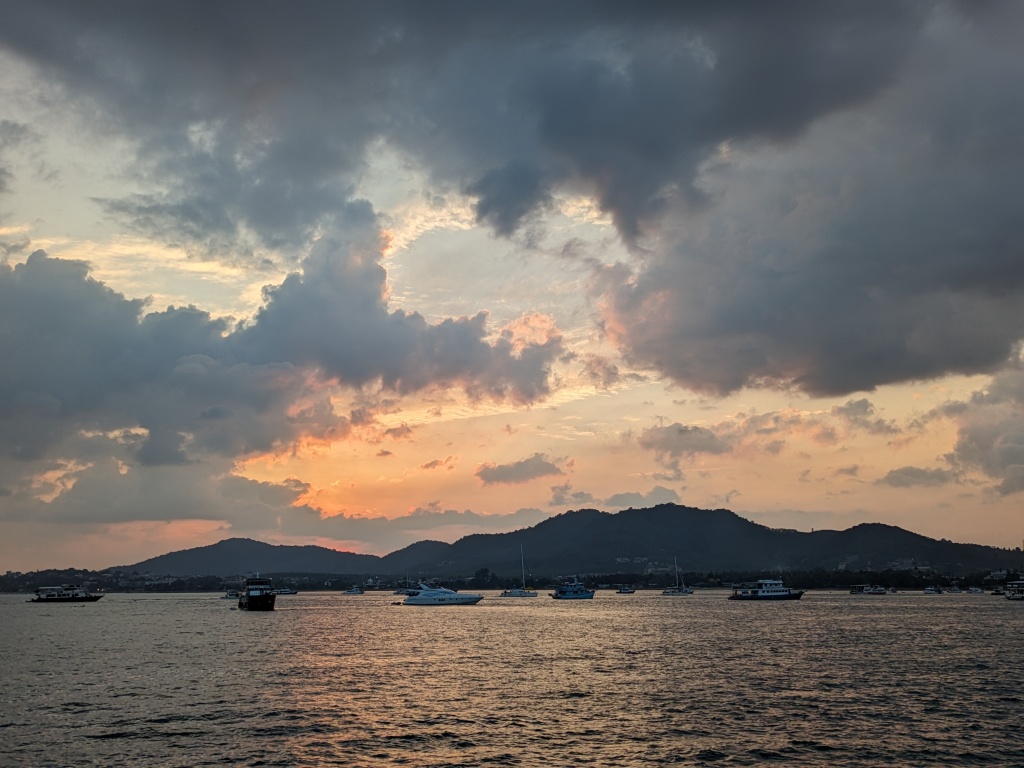
Phuket
A short plane hop from northern Thailand deposited us in the balmy south just before the New Year. Our previous 5 weeks in the north had caused our hard-won tropical acclimatization to deteriorate however, and we were hit with a wave of heat and humidity as we boarded a shuttle bus outside of the Phuket airport. We arrived after dark in Patong Beach, one of many bustling beach towns along the coast.
Patong Beach is the largest, busiest, and most developed area of Phuket. While it is not perhaps somewhere Chris and I would normally be drawn to, we selected it for its renowned New Years Eve fireworks beach party, and figured it would be interesting to check out for a few days. Our impression after our three-day stay? Phuket is definitely the Las Vegas of Southeast Asia. It’s loud and busy, full of spectacle, luxury shops, fancy restaurants, and tourists getting a little too loose with Thailand’s liberal substance policies. That being said, I’m still glad we went to discover it.
Perhaps the most surprising discovery about Phuket was that it was absolutely jam-packed with Russians. It was a surprise to us, upon sitting down to dinner when we arrived in town, that the menu was written in Thai, English, and Russian. You hear Russian all over town, and there’s a slew of Russian-owned businesses that are drawing in even more Russian tourists. Their arrival in droves seems to be explained by the war in Ukraine; while western countries have sought to isolate Russia with sanctions, Thailand has welcomed them in an effort to boost tourism post-pandemic.
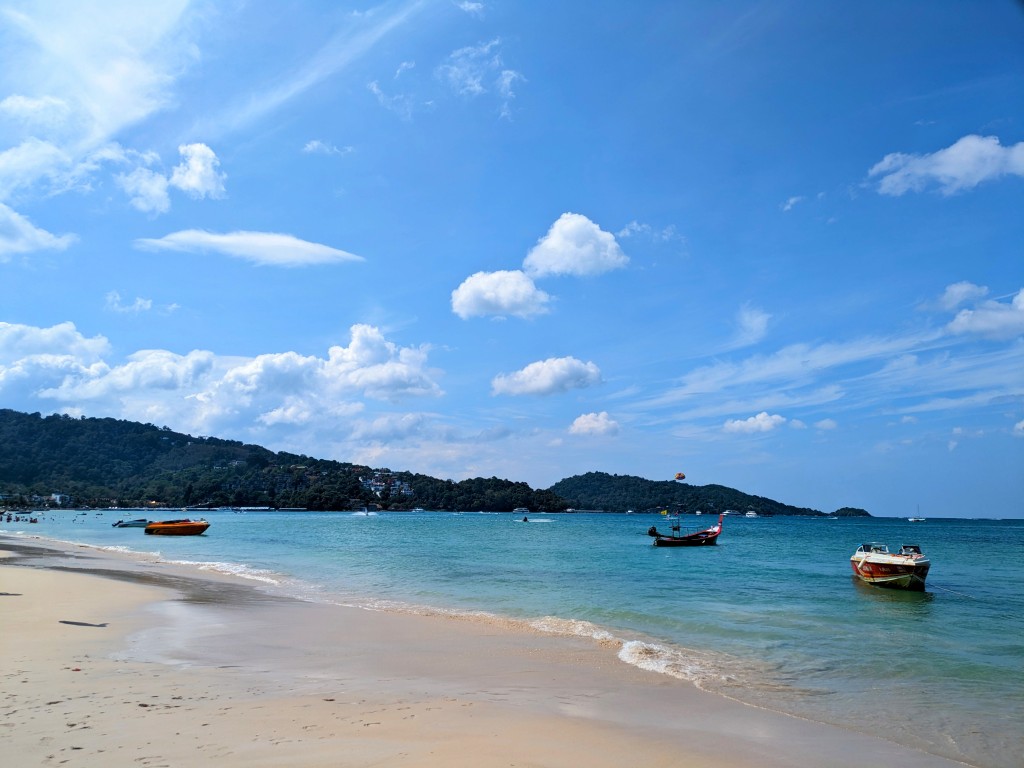
We found no shortage of shopping in Patong, including a modern new mall with western brands. We also found a little slice of Canadian culture.

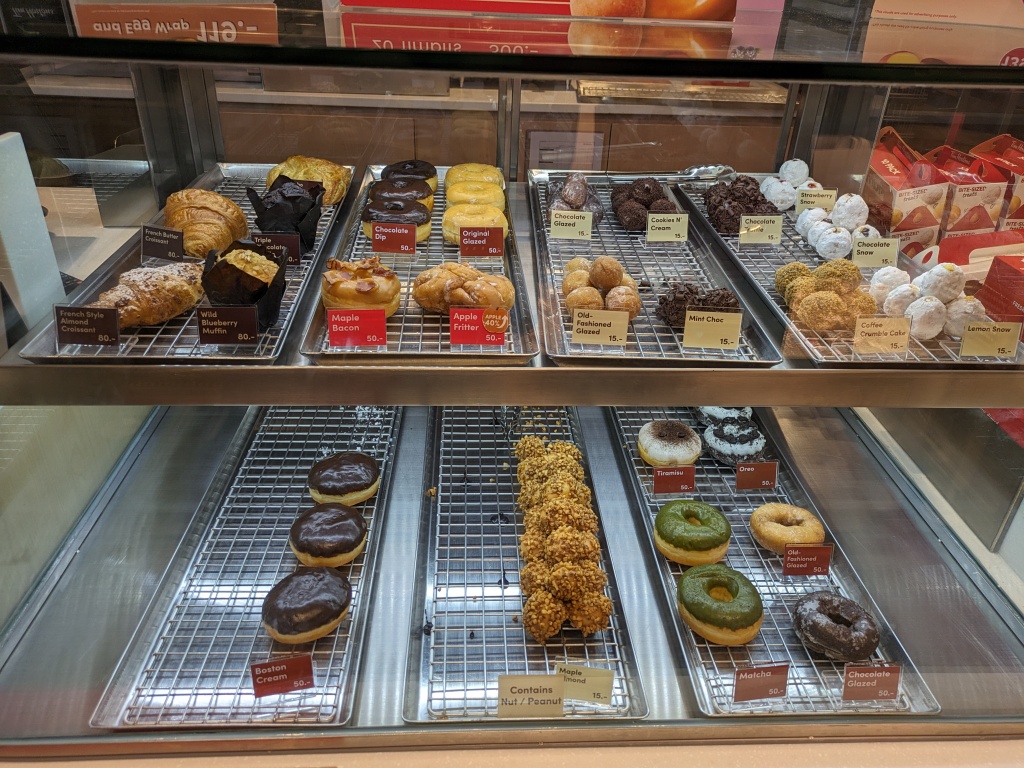
We honestly weren’t floored by the food in Thailand. While this cuisine frequently enjoys rave reviews by folks around the world, by the time we hit south Thailand, we’d already had more than our share of pad thai, fried rice, curries, and rice (Cambodia and Laos have very similar food to Thailand also). Phuket presented this same westernized ‘fast-food’ style Thai menu, but at an extremely elevated price. We found lots of expensive chains as well, such as the uber-fancy Coffee Club.
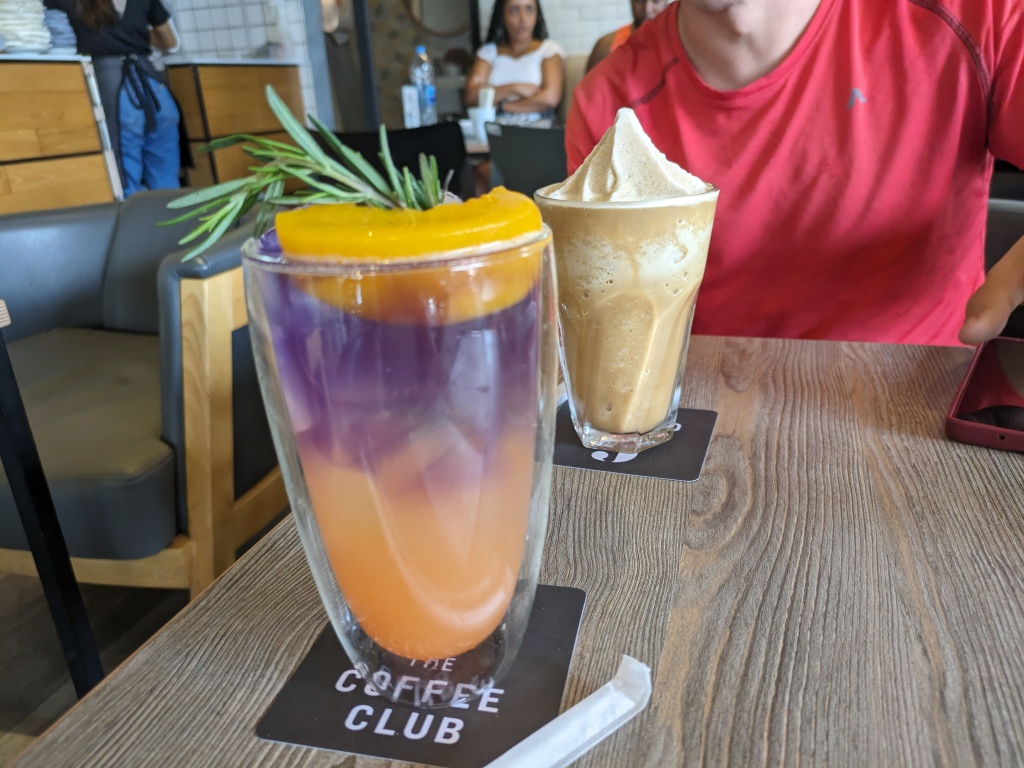
Phuket, situated next to many prime scuba diving sites in the Andaman Ocean, is a hub for diving vacations. After stopping into a scuba shop for some info, we booked ourselves a fancy single-day boat diving tour to the Phi Phi Islands. Located about two hours off the coast of Phuket, Phi Phi is famous on social media for its pristine beaches and elaborate resorts. While we had decided that staying on the Phi Phi Islands was not for us (it’s a messy and expensive party scene for young adults apparently, and we were having a hard time imaging anywhere more expensive than Phuket…), we were happy to dive the Islands as a day-trip.
Our tour was scheduled for New Years Eve. A shuttle picked us up from Patong in the morning, and drove us across the peninsula to the harbour, where we met our Divemaster (guide) and dive group. We were shown onto the boat, where the crew proceeded to pack us full of food for the duration of the day. We did three dives, with all the intervals centered around delicious meals and snacks: a breakfast buffet, fresh fruit, a lunch buffet, snacks like spring rolls and french fries, and even an ice-cream bar. The dives themselves were fantastic: some of the most memorable sights include a massive green turtle, a tiny seahorse, a huge sting ray, and an elegant leopard shark that swam around with us. We even swam into a dark cave (a first for me).
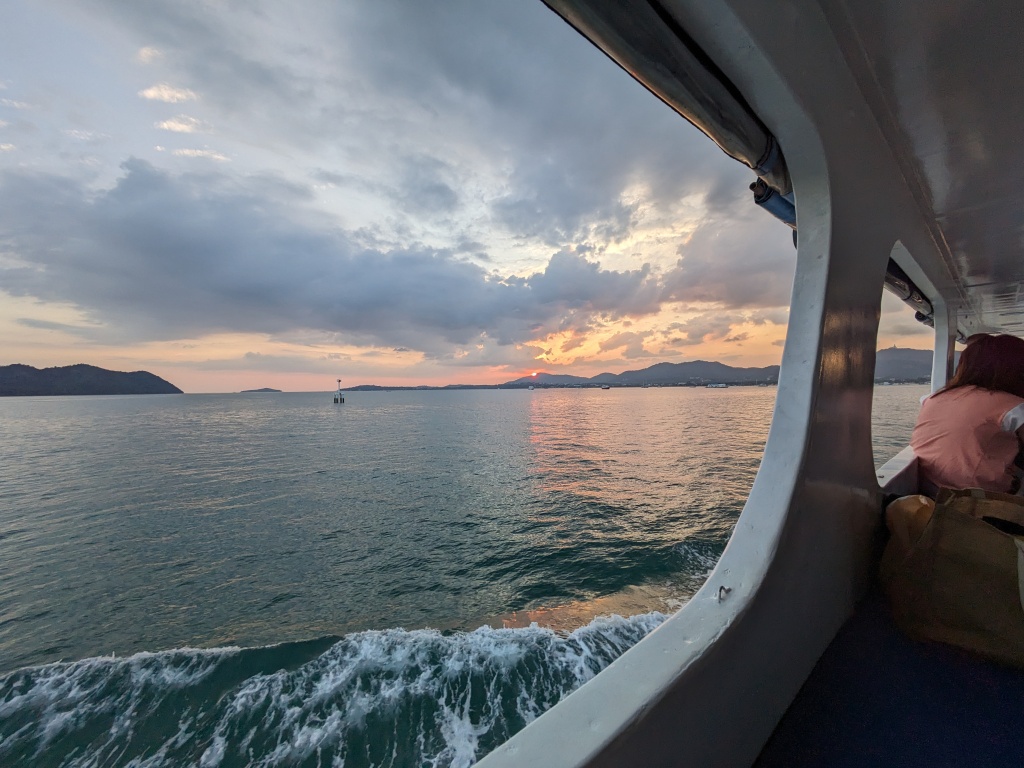
The Phi Phi Islands dive trip was the fanciest diving experience I have ever had. It was by far the biggest boat, with plenty of good food. The crew and Divemasters completed all gear setup for us as well (unusual on smaller or cheaper trips), and the crew ran the whole operation like a well-oiled machine. The smoothness and quality, given the sheer volume of people on board, was outstanding.
Getting back into Patong after our dive trip was another matter however. The sun had now set, and everyone was now on the roads trying to get to their various New Years Eve festivities. It took a loooong time to get back to our hotel, and after a brief rest to try to marshal our remaining energy, we headed out into the chaos of New Years in Phuket. While Chris was still feeling sick from the stomach bug he acquired during Christmas in Laos, he rallied and managed to get out for a couple drinks.
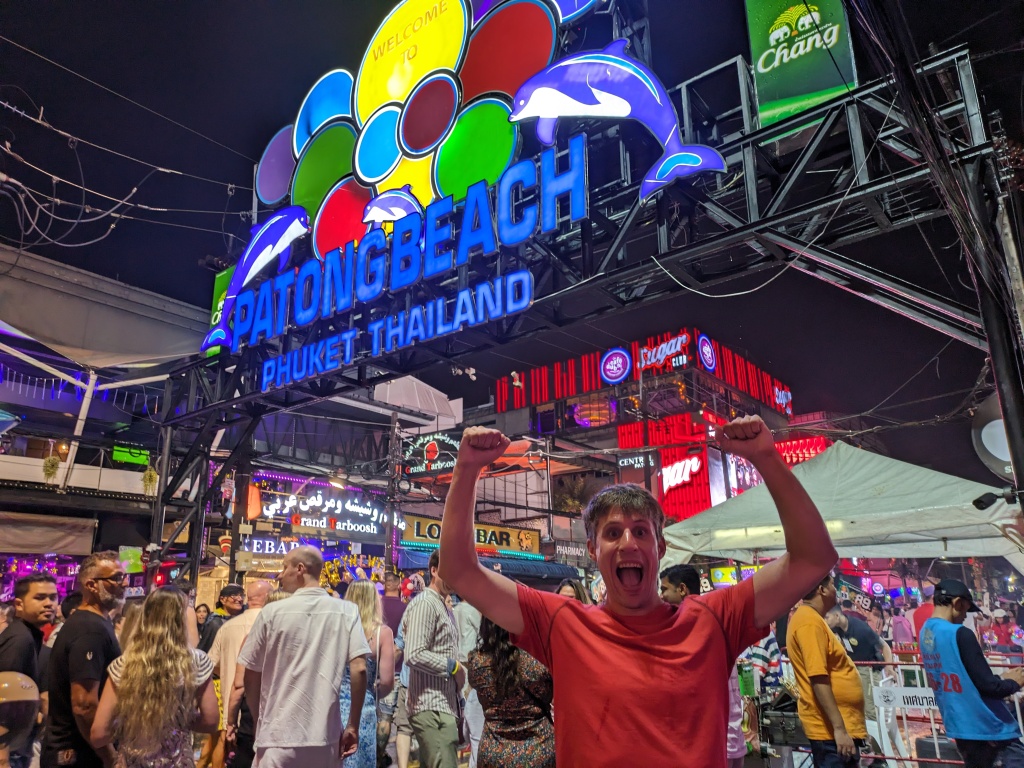
We spent our evening on Patong Beach watching the skies. Fireworks are cheap and available, and are thus being set off constantly for hours. Additionally, lighting paper lanterns and sending them aloft into the sky is a popular tradition. The beach ambience – fireworks and hundreds of floating lanterns – is wonderful. We also got plenty of amusement from those tourists who failed to properly launch their lantern. The floppy lantern would limp and stutter just above the heads of the crowd, then burst into flames and plummet down before burning up. Fortunately, enough watchful eyes were present to call out warnings whenever a precarious lantern got too close.
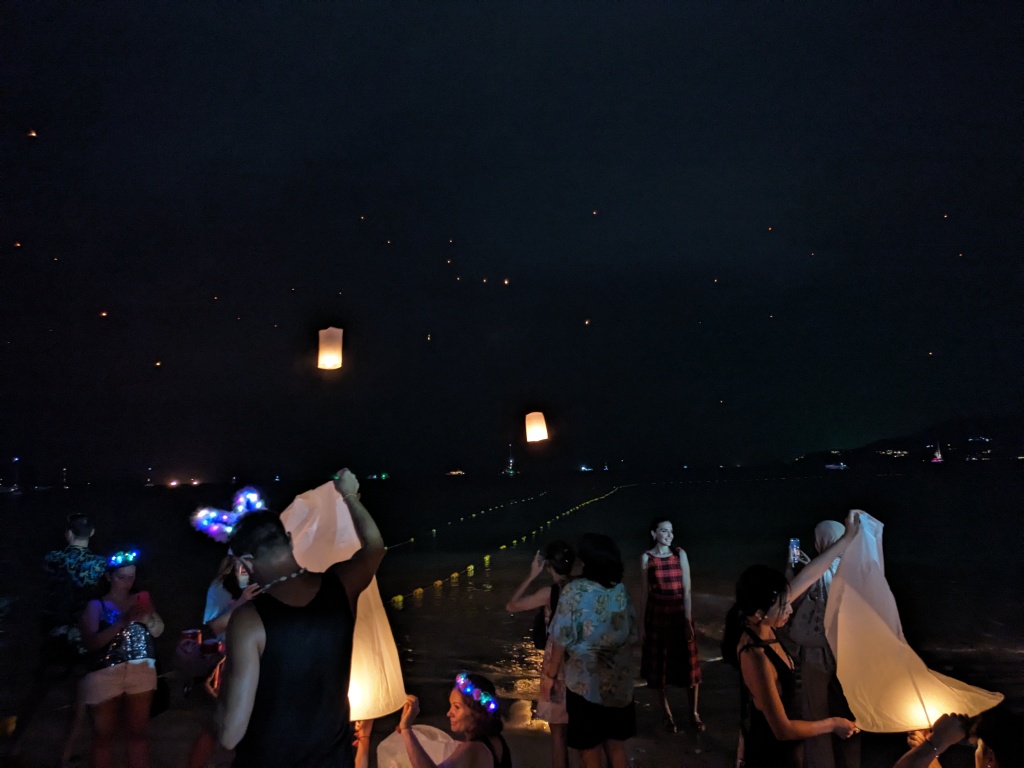
In addition to the fireworks and lanterns, a stage was set up for a beach concert and countdown. We joined the countdown near midnight, but didn’t stay long afterwards, as we were quite tired from our early morning and day of diving.
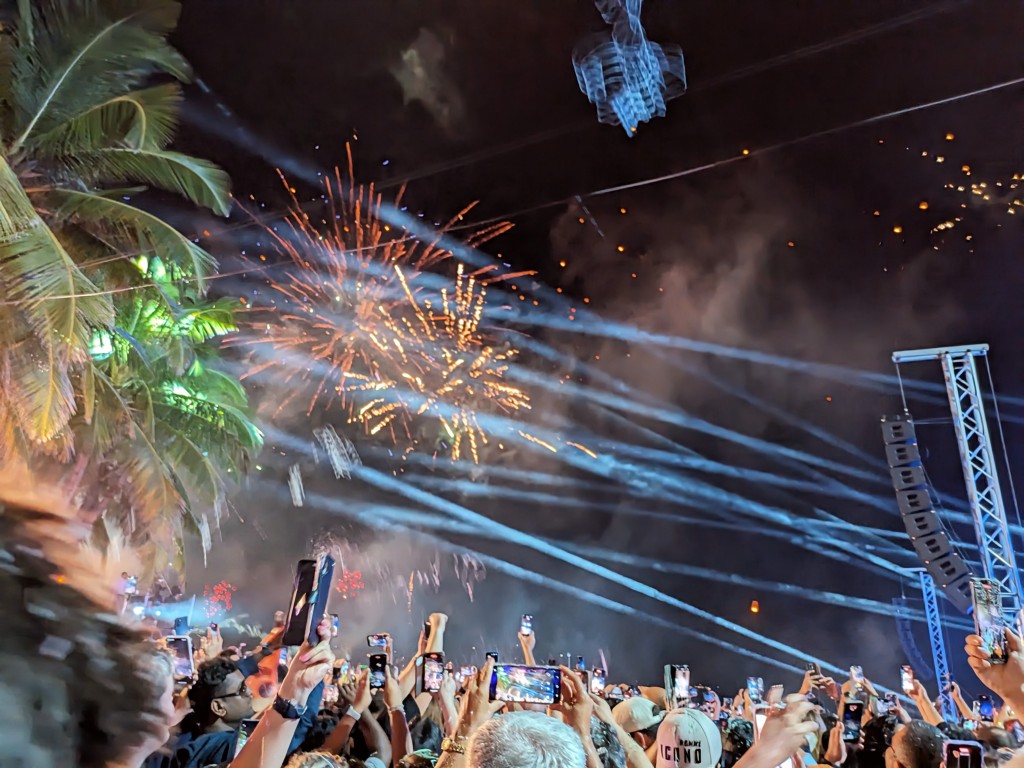
Shouldering our way out of the dense crowd around the stage, we fought to make our way back towards Bangla road and the quieter streets beyond. Unbeknownst to us, this exact spot and date was a known problem to Phuket officials and residents: Chris and I soon found ourselves caught up in crowd crush. A crowd crush occurs when a dangerous density of people is reached in a confined space, leading to a loss of autonomy within the crowd, and potentially fatal consequences if individuals lose their footing and the crowd begins to ‘collapse’ (ie: fall down and get crushed). You may recall a recent media story about the tragic Halloween gathering in Seoul in 2022, in which 150 people died due to a crowd crush.
As the crowd continued to thicken around us, we couldn’t help but recall such stories. At first, it was just a vague association, but as the pressure continued to increase, and we began to seriously wonder if we were to be caught in a crush. Our progress was halted, and space dangerously limited, and we began to get caught up in ripples of movement as people started to get anxious and push. Barriers had for some reason been erected, which meant that we, and everyone with us, were increasingly powerless to escape. The air soon felt hot, stuffy, and thin. Standing on tip-toe was enough for me to grab a breath of fresh air, but other people lacking my height were not so fortunate.
A woman passed out somewhere near us in the crowd. Her panicked friends hoisted her onto their shoulders and aggressively began fighting through the solid mass of bodies, one of the young men with them screaming and on the verge of panic. Chris yelled at him repeatedly to calm down; the last thing any of us needed was for people to panic and begin shoving, which could lead to the entire crowd falling like dominoes. Just enough space was found to extract the unconscious woman, and slowly, the entire crowd inched forwards. We had no choice in the matter – movement occurred only as pressure ripples with that density of people. But slowly, we moved forward, and the barriers dropped away to deposit us on the street. While still crowded and tight, we had some freedom of movement back, and after a few more minutes of escaping the Bangla Rd area, we were back to normal levels of street traffic. With fireworks still blasting off in the distance as we walked back to our hotel, we were left to recount our stories of growing fear during the event, marvel at the poor management of the Phuket authorities, and appreciate that a major disaster had not taken place.
2024 was certainly off to an interesting start.
Ao Nang (Krabi)
After a loooong day of bus riding, we arrived late in Ao Nang, the famous beach town of the Krabi province (just east of Phuket). While still touristy, we found Ao Nang much quieter than Phuket, and with so many absolutely stunning beaches nearby, we could hardly blame others for flocking here in droves. Beyond the two land-accessible beaches in town (Ao Nang beach and Pai Plong beach), another three were just a short boat ride away: Railay, Tonsai, and Phra Nang beaches.
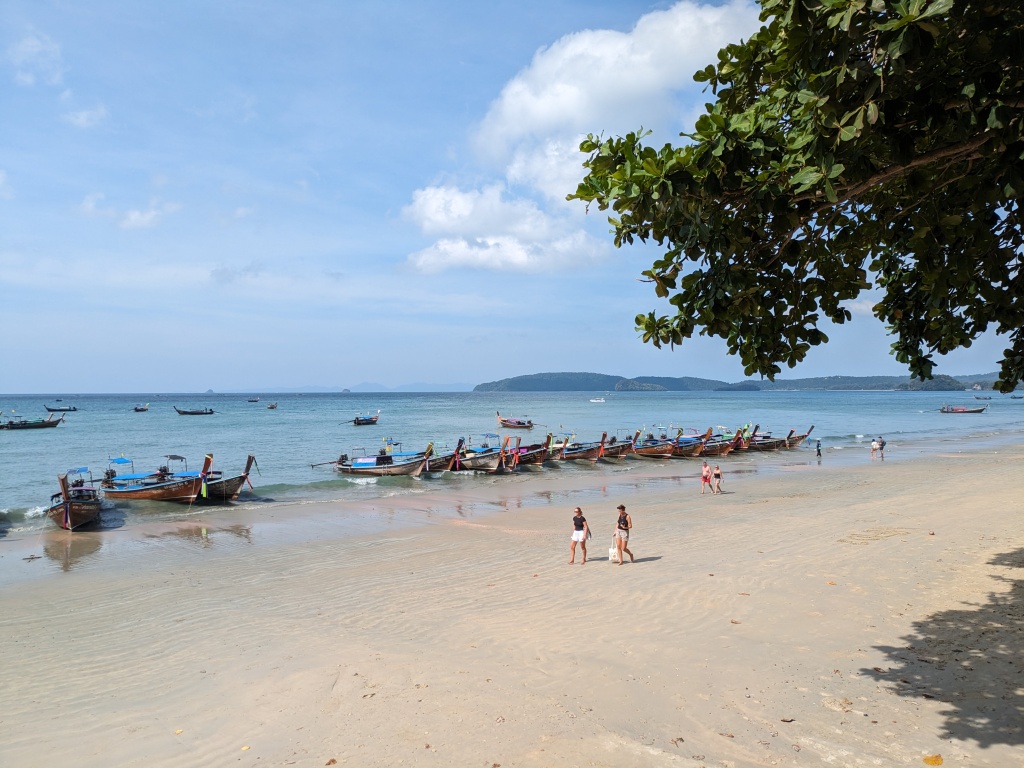
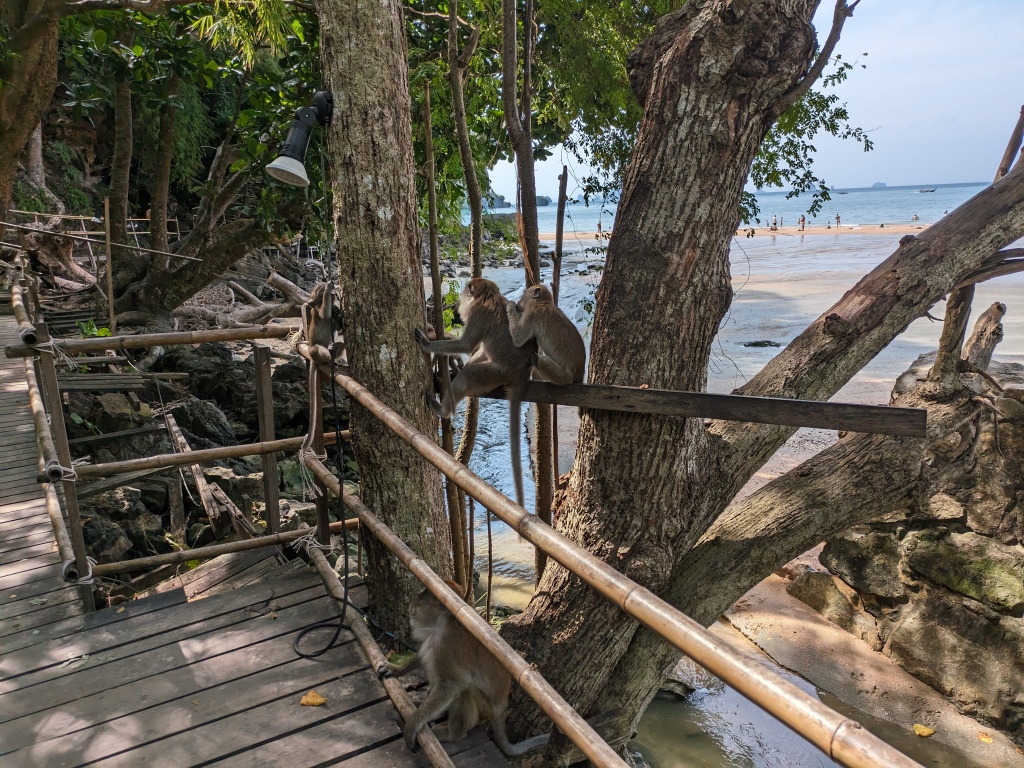
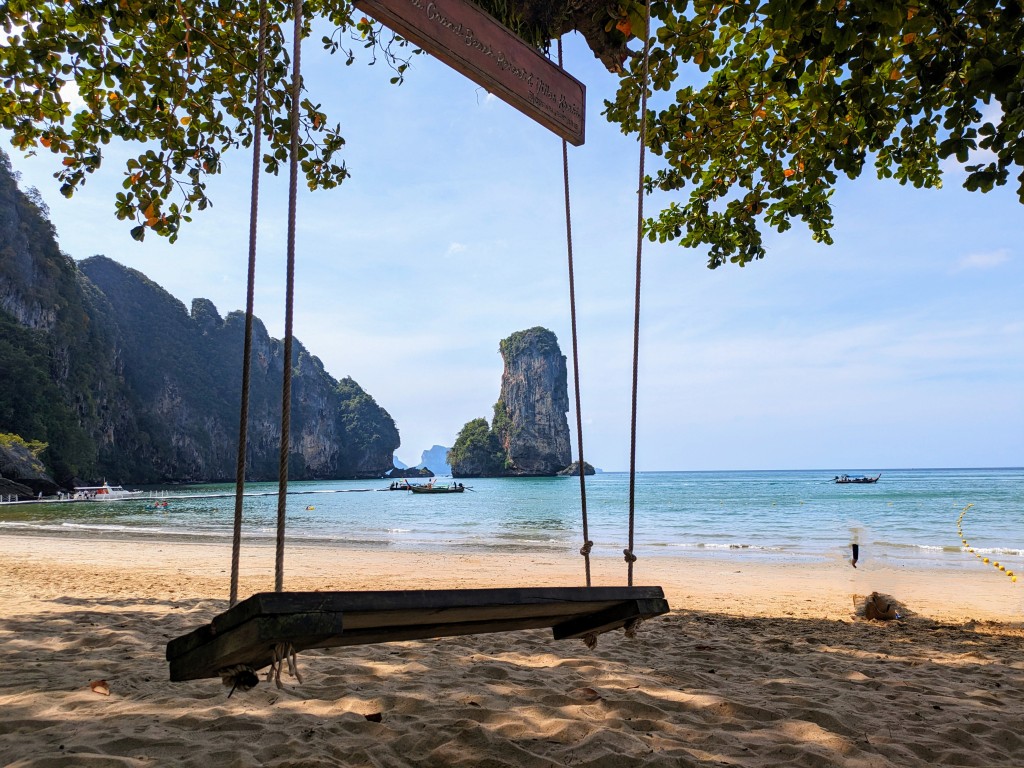
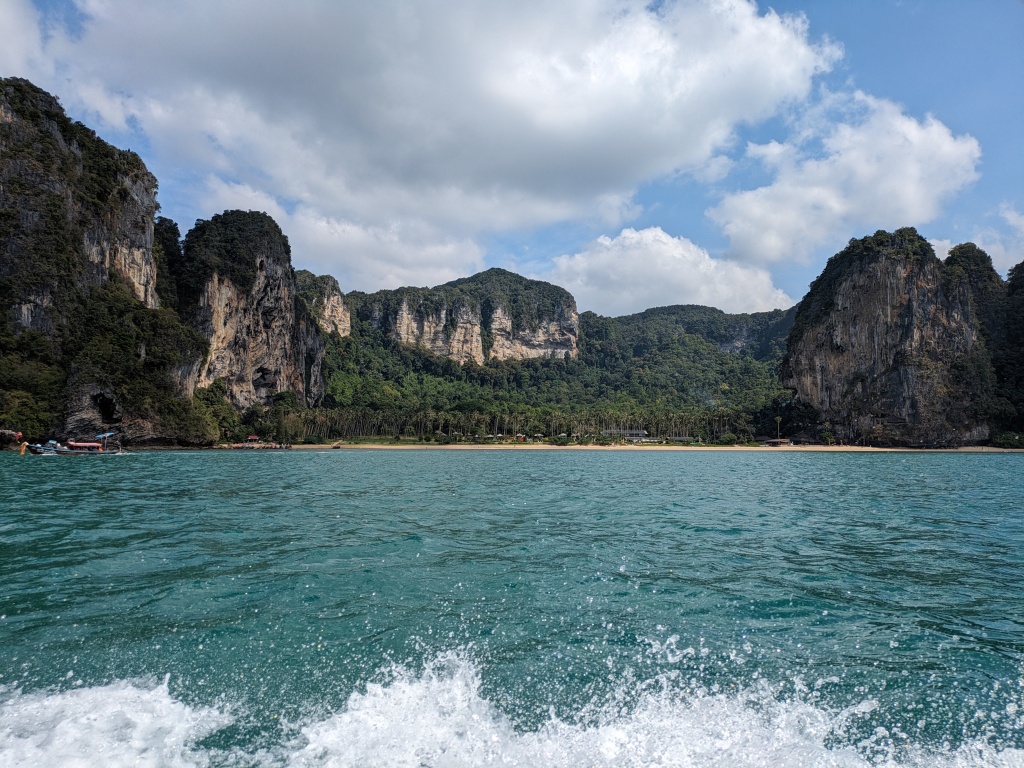
While we stayed in Ao Nang, we wished we were able to stay in the water-access village of Railay. As we visited in high-season in January, the limited accommodations there were already booked solid. We had to content ourselves with a day trip.
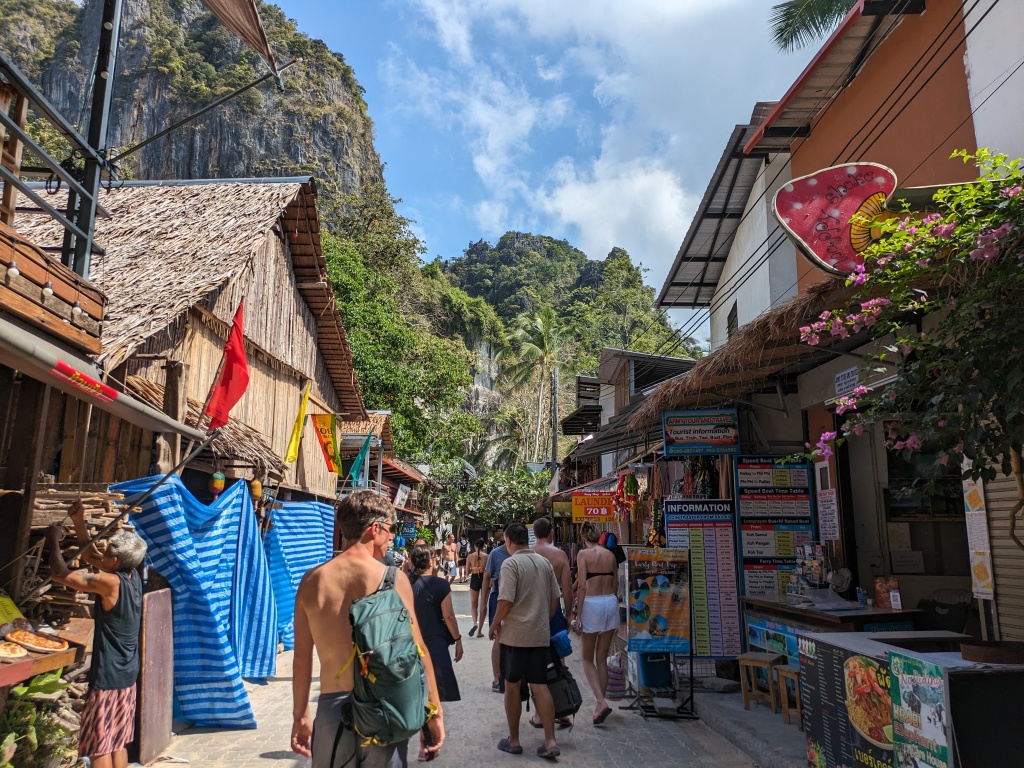
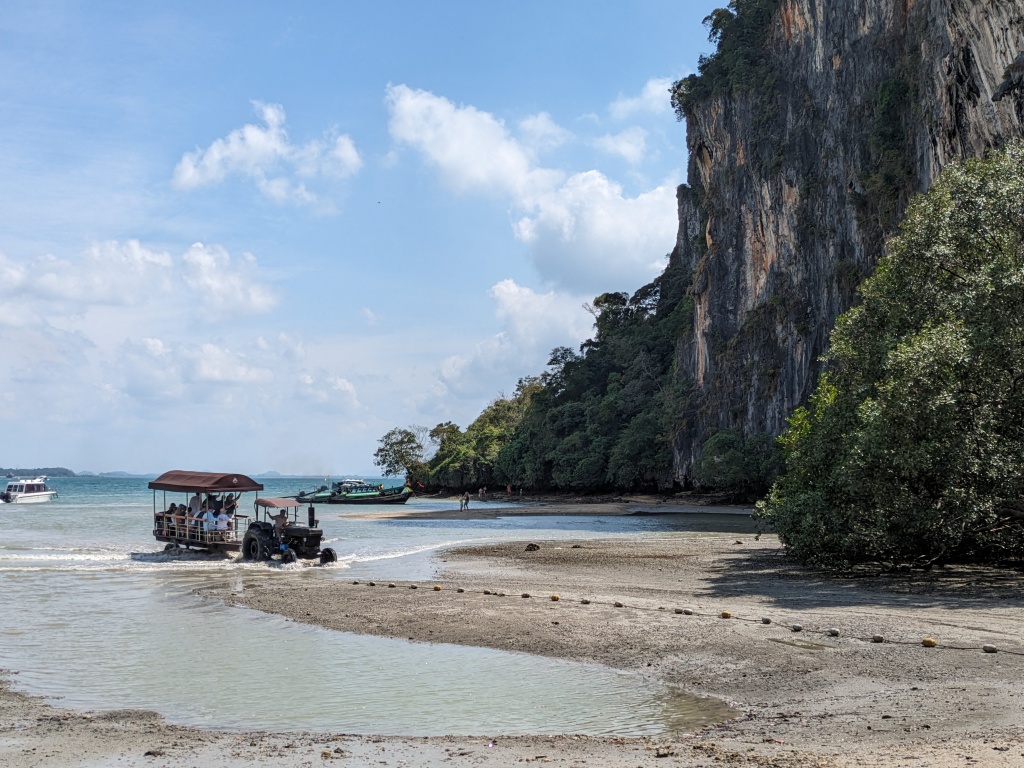
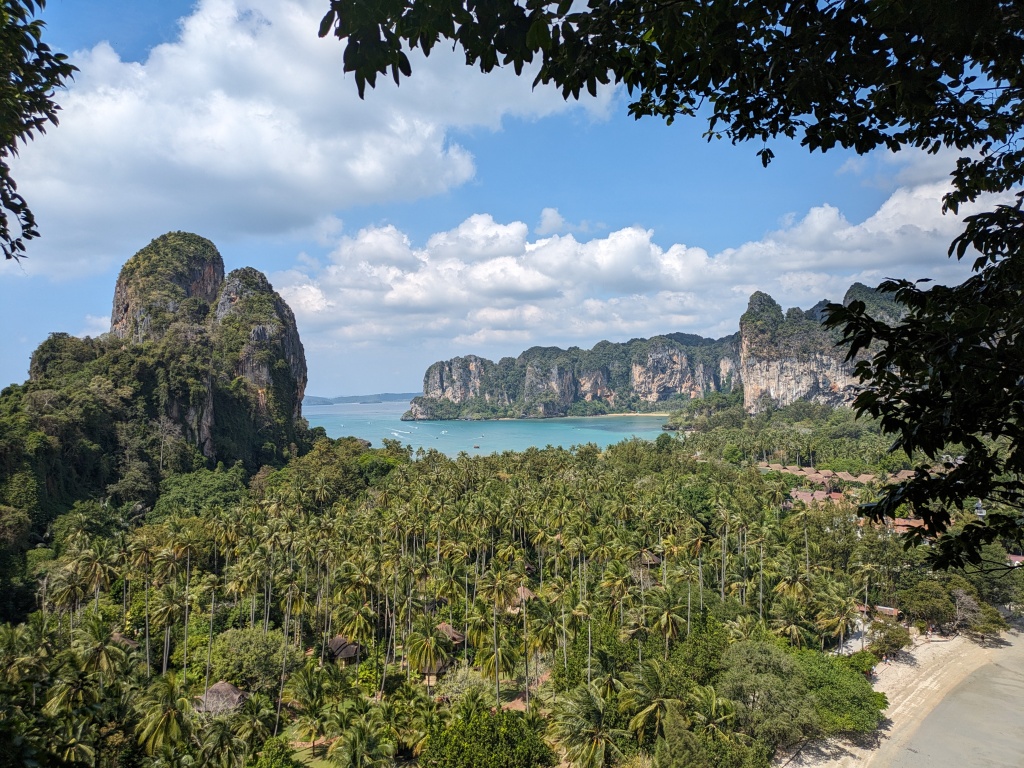
A walk through Railay leads to Phra Nang beach, arguably the best beach in Krabi. The beach, besides plenty of hot, white sand, features some cool rock climbing routes, a famous shrine, and a large cave for exploration known as the Bat Cave. Without having a ton of information, we set off to find and explore the Bat Cave.
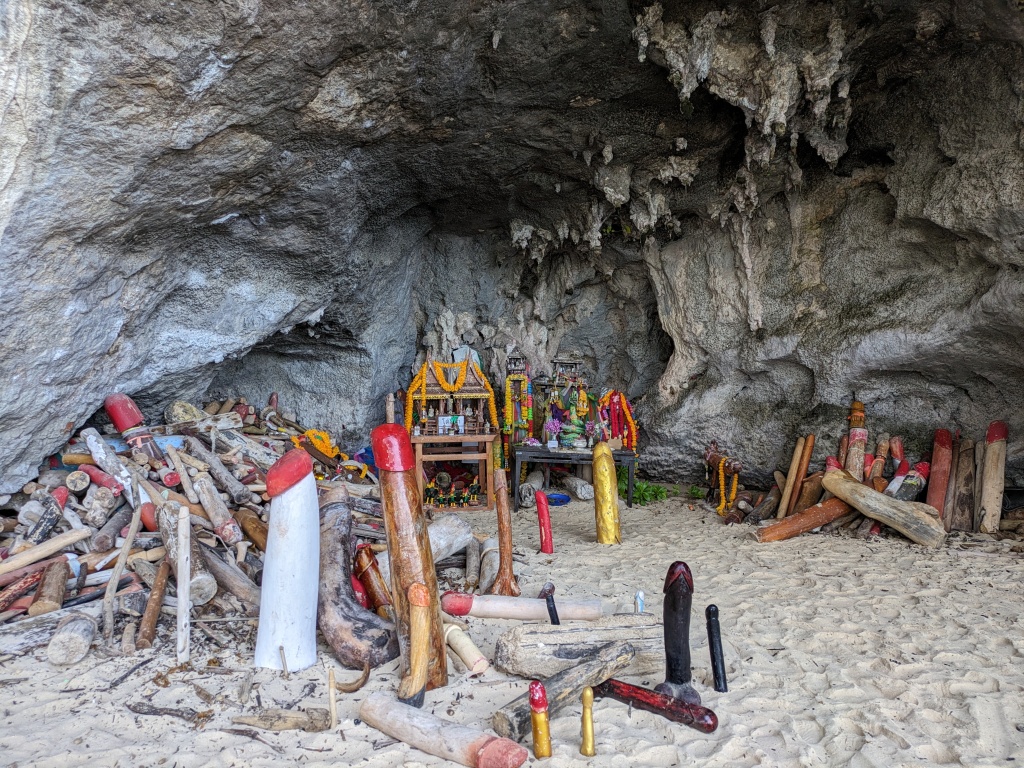
Walking all the way down to the end of Phra Nang beach, we waded through the water with our backpacks (sometimes up to waist deep!) to reach what we thought might be the entrance. After a steep climb up, we we realized this was not the Bat Cave entrance. We did get some great photos however.
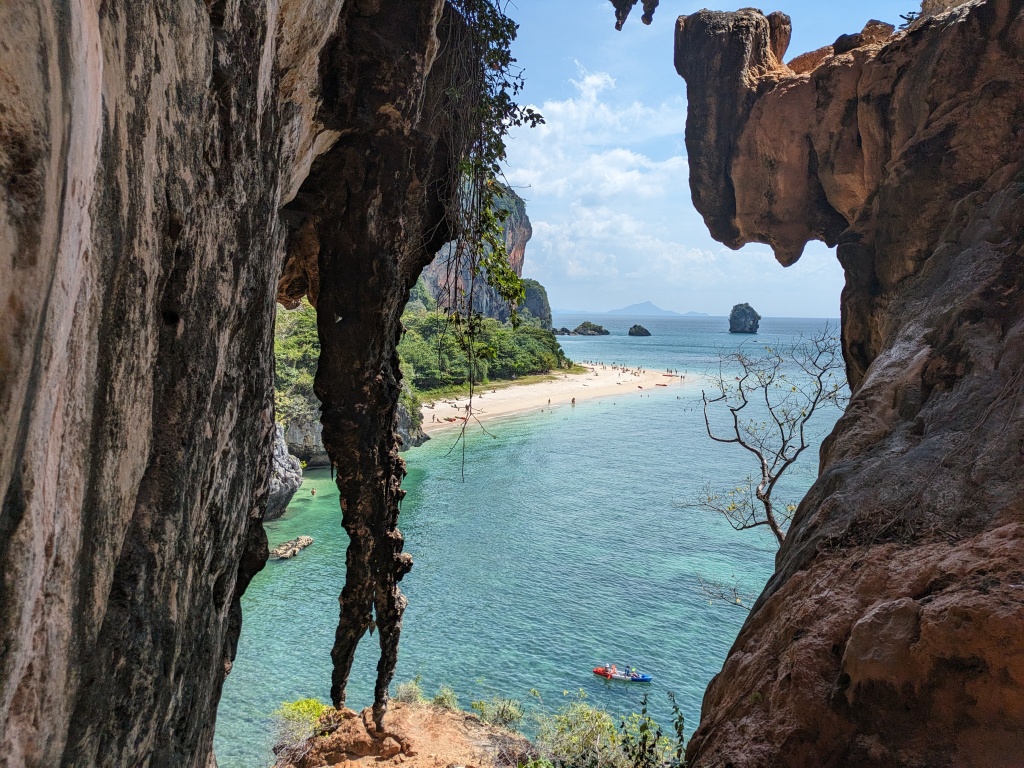
After climbing back down and wading back to the beach, we soon located a trail in the bushes at the end of the beach. Following this led us to a bunch of rock climbing routes, and climbed up eventually to the mouth of the Bat Cave.
Bat Cave itself was a fun adventure. It takes about 15 minutes to wander through. It’s pitch black, so you’ll need a light to hunt for the ladders which mark the way to a viewpoint opening at the top. We discovered once we arrived that this was also the top of a climbing route – many tours take folks through the cave to rappel down the climbing route and back to the beach.
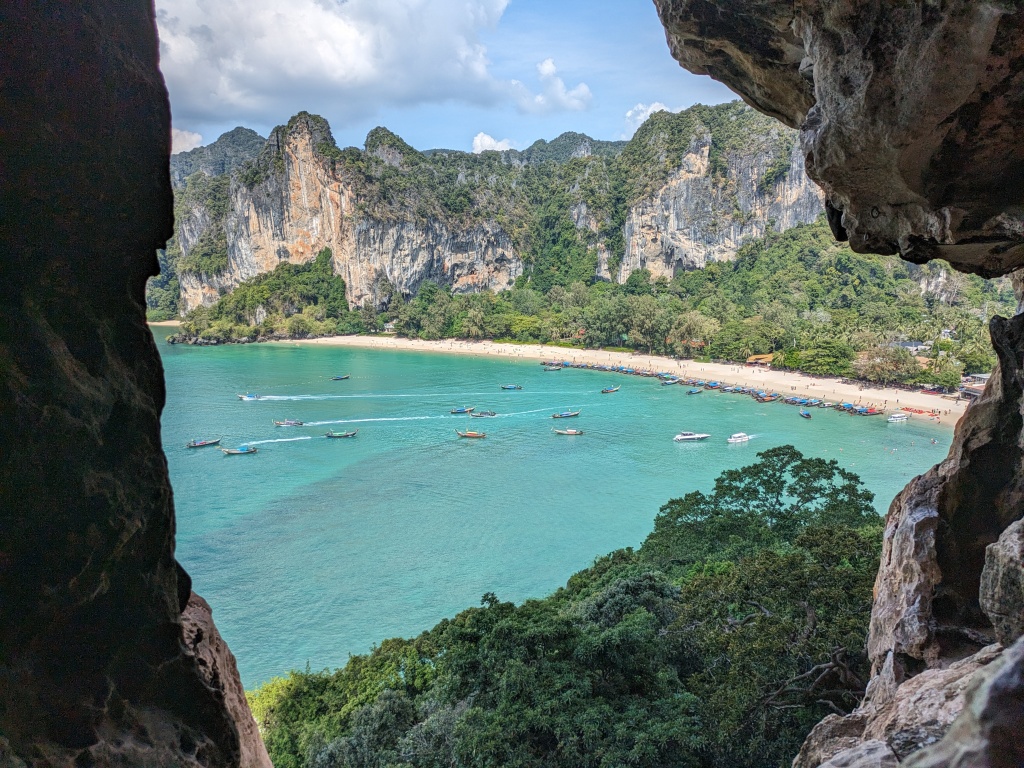
As well as beach hopping, Ao Nang has all the other typical tourist beach town attractions: lots of restaurants, cocktails, and shopping. There is also a nightly fire show that I found unusually entertaining.
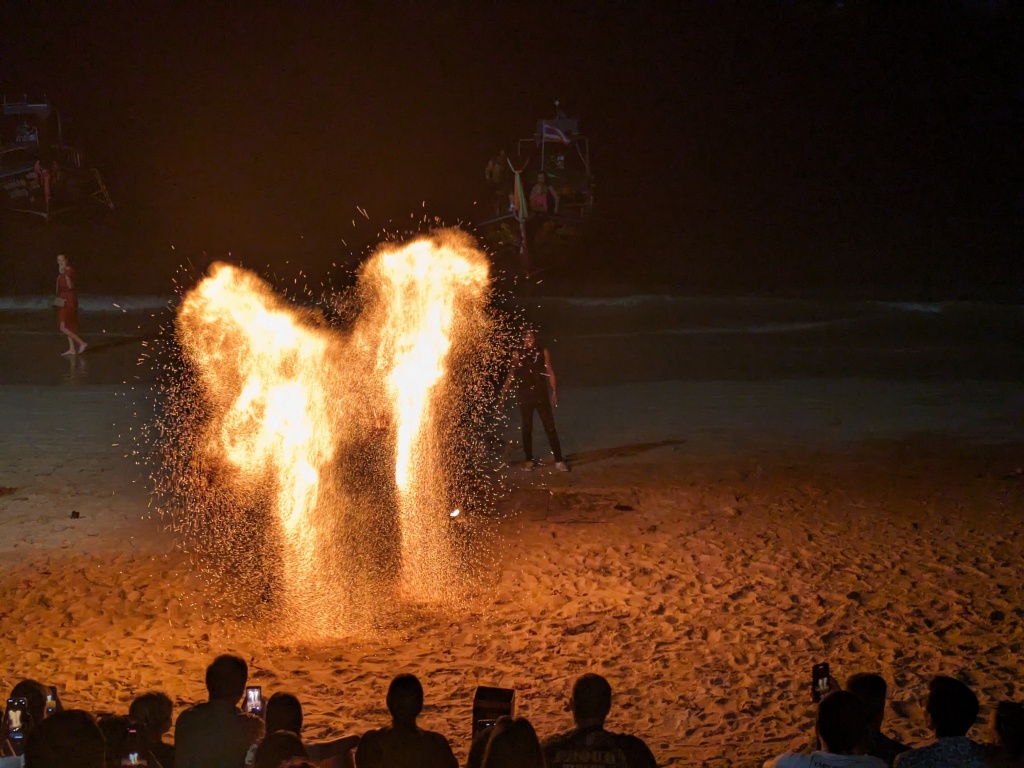
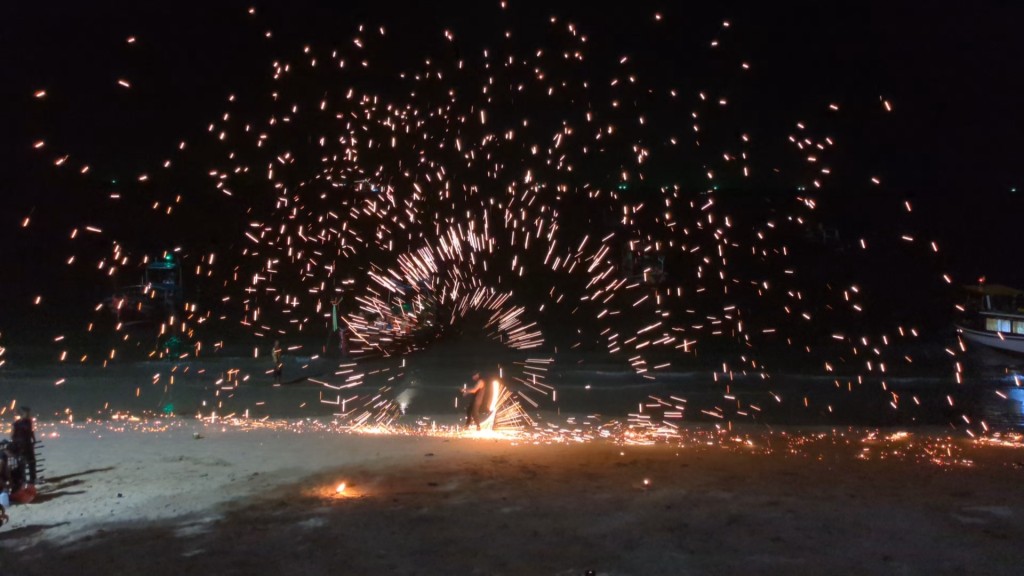
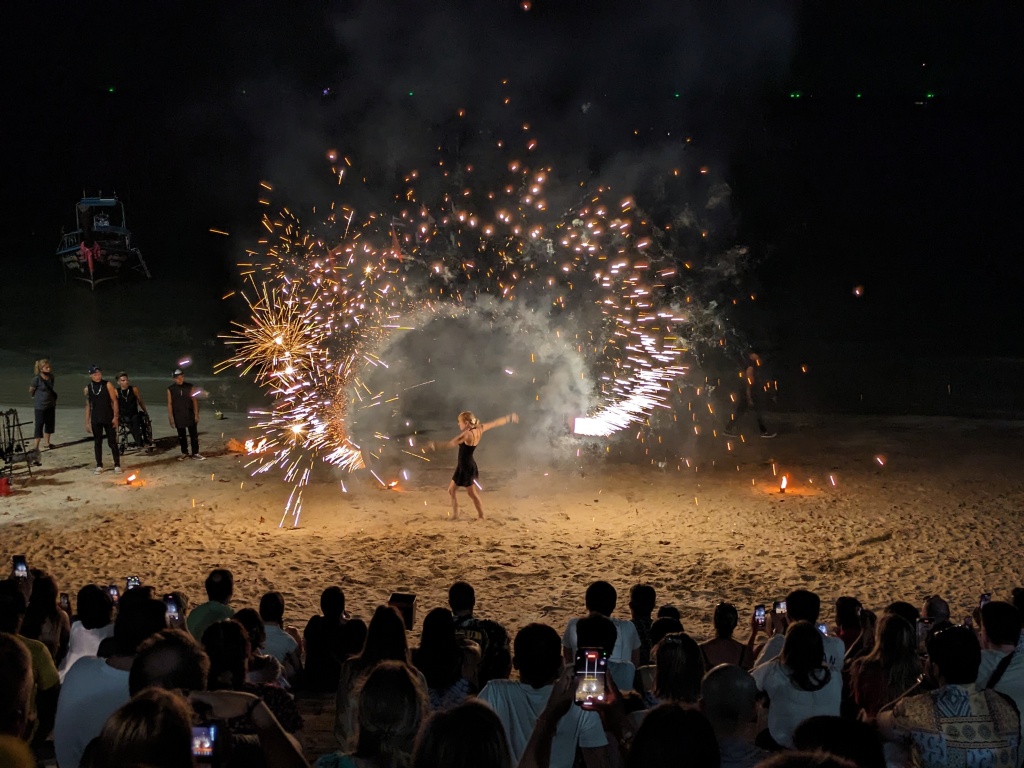
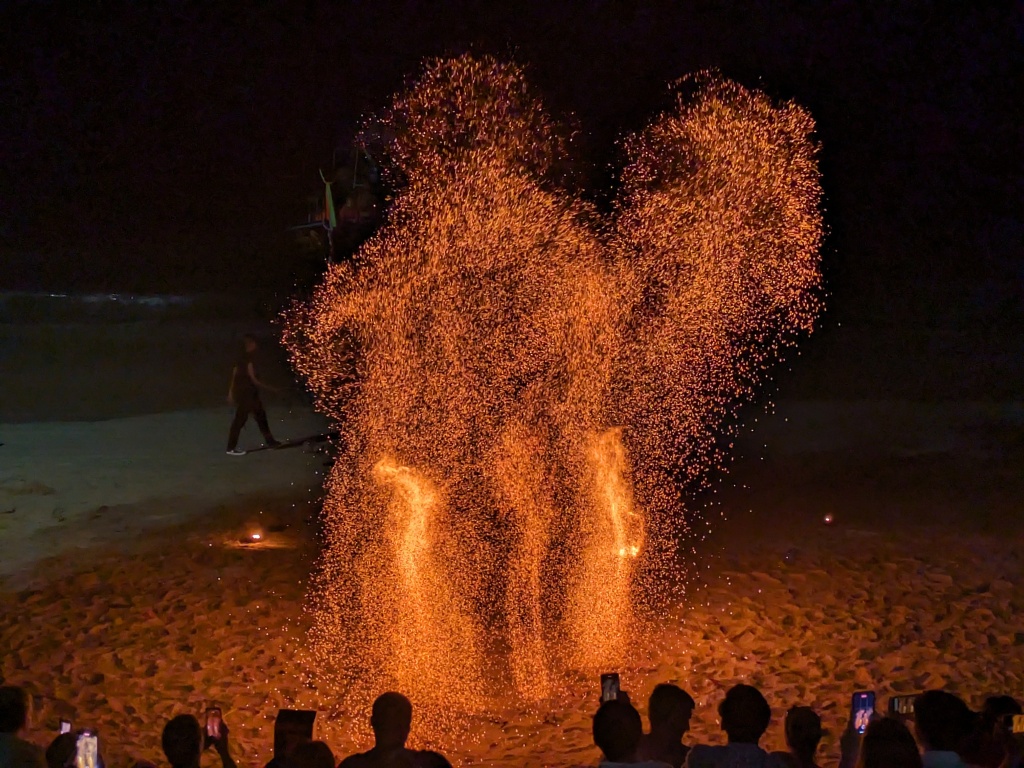
Koh Tao
Our final stop in Thailand was the small island of Koh Tao, located in the middle of the Gulf of Thailand. Koh Tao is a backpacker paradise, famous primarily for its scuba diving and beach party scenes (although not nearly as crazy as neighbouring Koh Phangan). What attracted us to Koh Tao was the promise of some of the cheapest scuba diving in the world, accompanied by a proliferation of dive shops focused on teaching; as diving is so cheap, many travel to take courses here, including multi-month courses such as Divemaster.
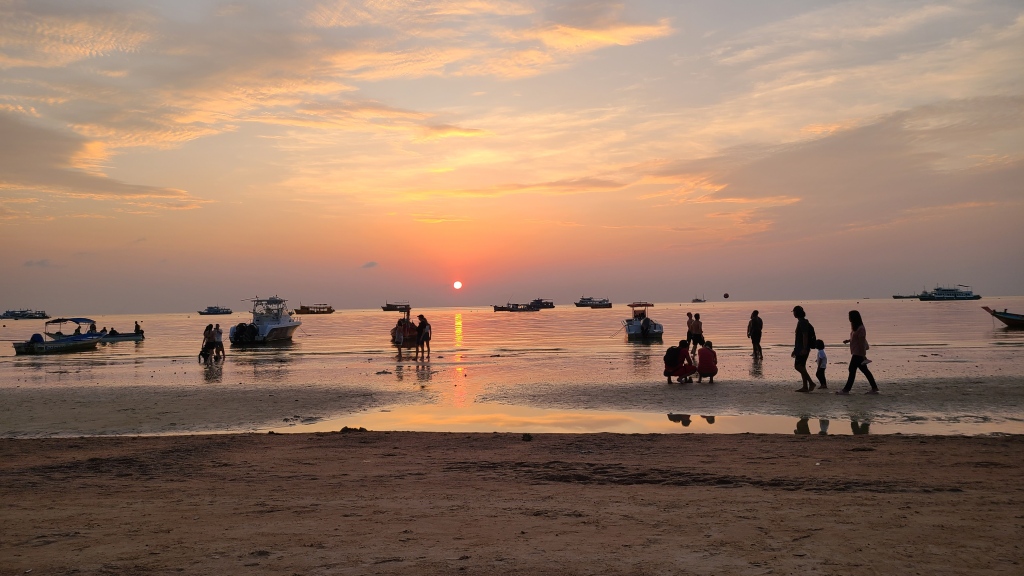
A short bus ride from Ao Nang, plus a 3 hour ferry, left us in Koh Tao. We stayed just up the hill from Sairee beach, which is the main hub of the island. The area is a little crazy, full of shops, restaurants, hotels, dive shops, and tourists zipping around on motorbikes.
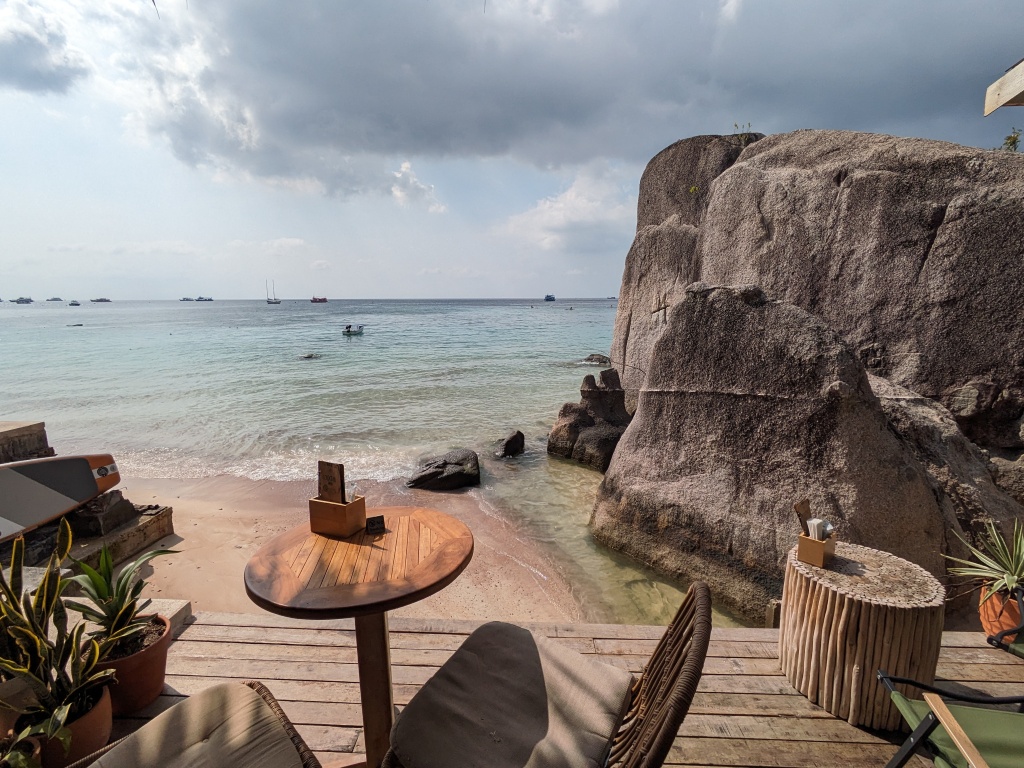
As we intended to remain on Koh Tao for a few weeks, we had plenty of time for diving. I started off by taking the Advanced Open Water course, and followed this up with something like 6 more dives. The diving was very enjoyable – I saw some cool creatures and met some interesting travelers on the boat.
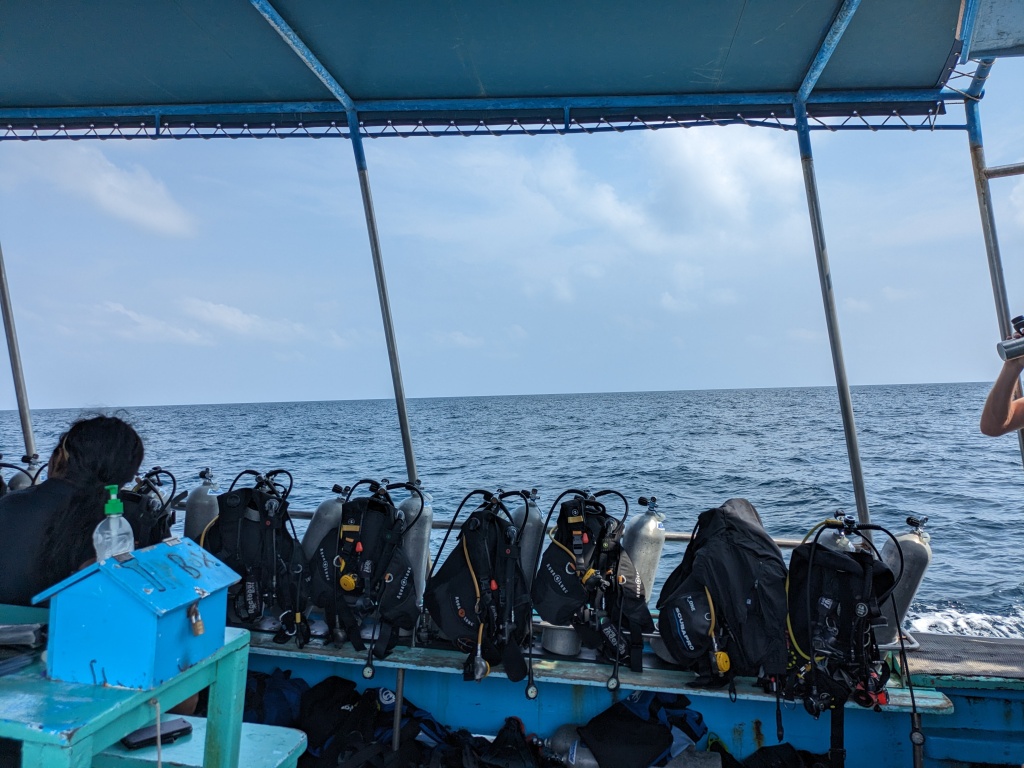
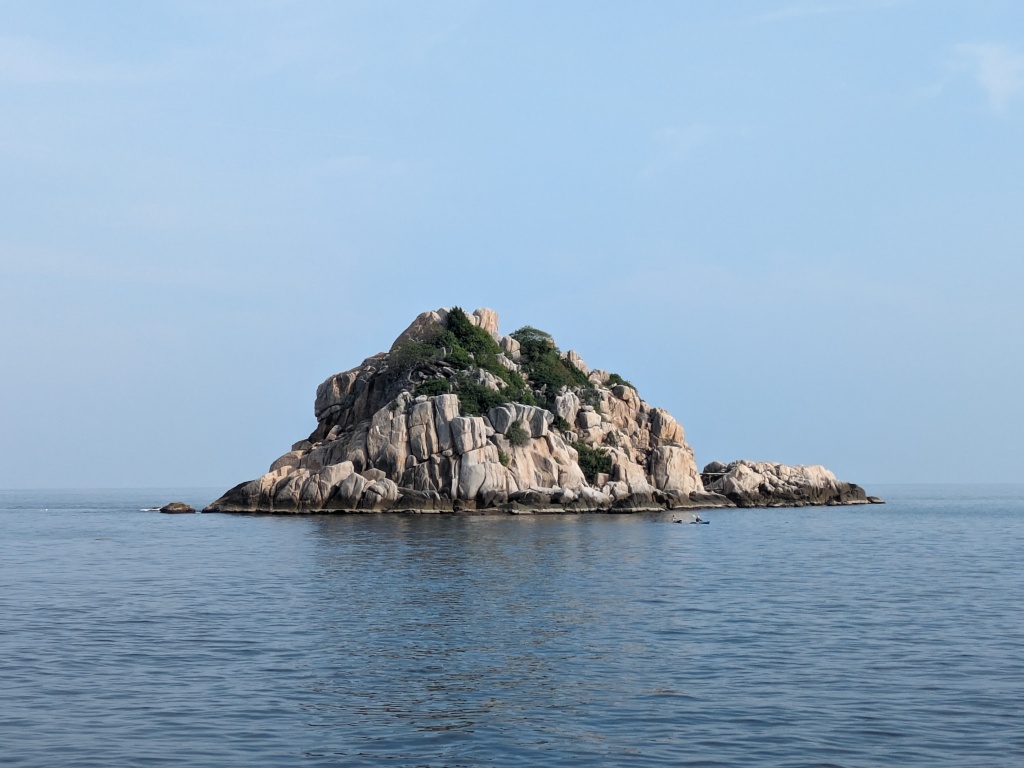
In addition to scuba diving, I also got out for a full-day snorkeling tour around the perimeter of Koh Tao. We stopped at Nang Yuan Island, Mango Bay, Hin Wong Bay, Aow Leuk Bay, and Shark Bay. The snorkeling was fantastic; many beautiful and healthy reefs lie just beneath the surface of the water. Visibility was great, and I saw a ton of colourful fish, as well as two giant green turtles.
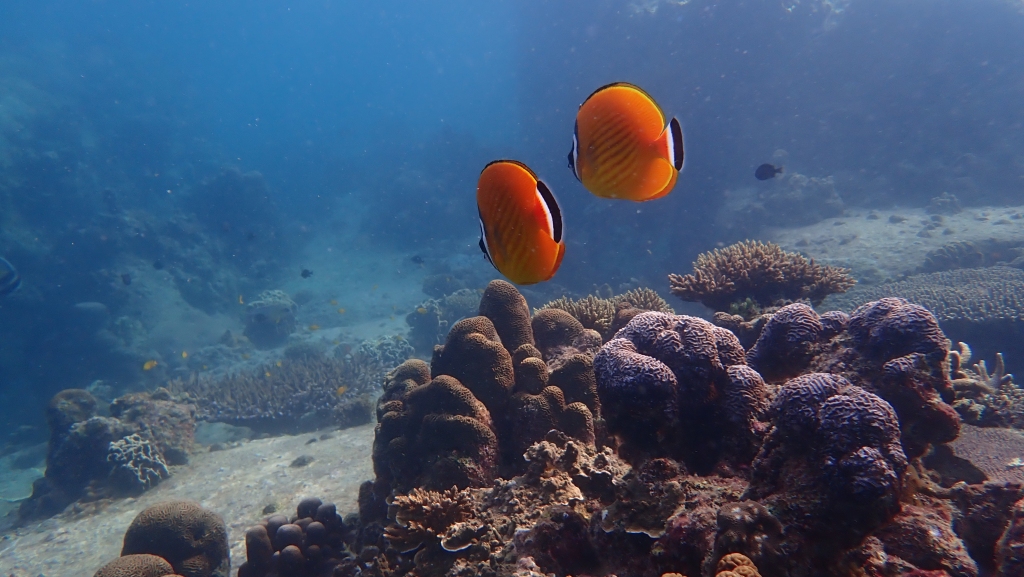
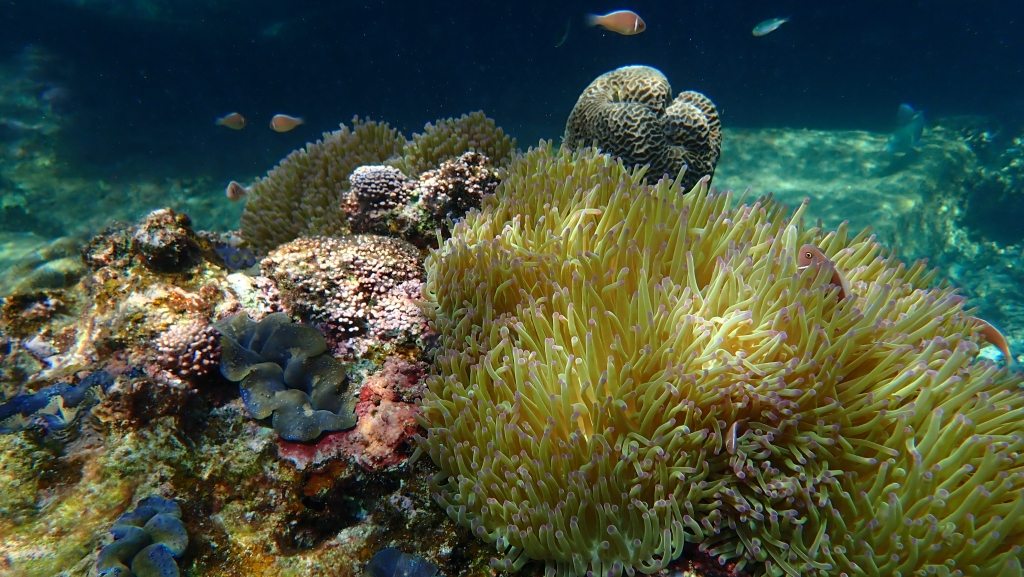
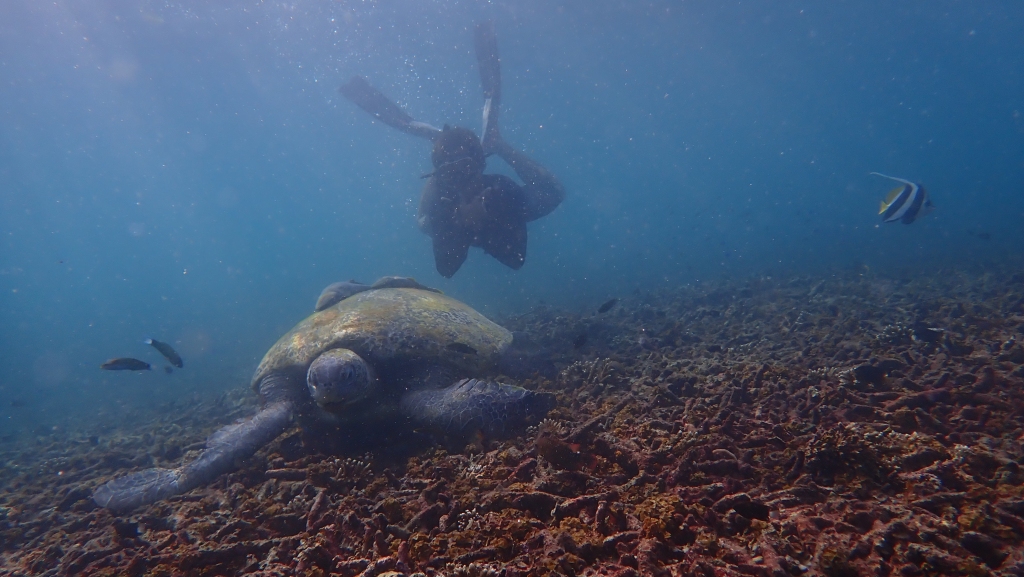
My favourite stop of the tour, however, was Nang Yuan Island. This island is about a ten minute boat ride north of Sairee beach, and is the home of an iconic white sandbar bridge and a dive resort. The island was incredibly beautiful, with white sand beaches miraculously free of plastic (thanks to very strict rules on what visitors can bring to the island), and featured a little cafe restaurant perfect for a midday mango smoothie. A few snorkeling spots lie right off the beach, and there’s even a short viewpoint hike for some panoramic photos.
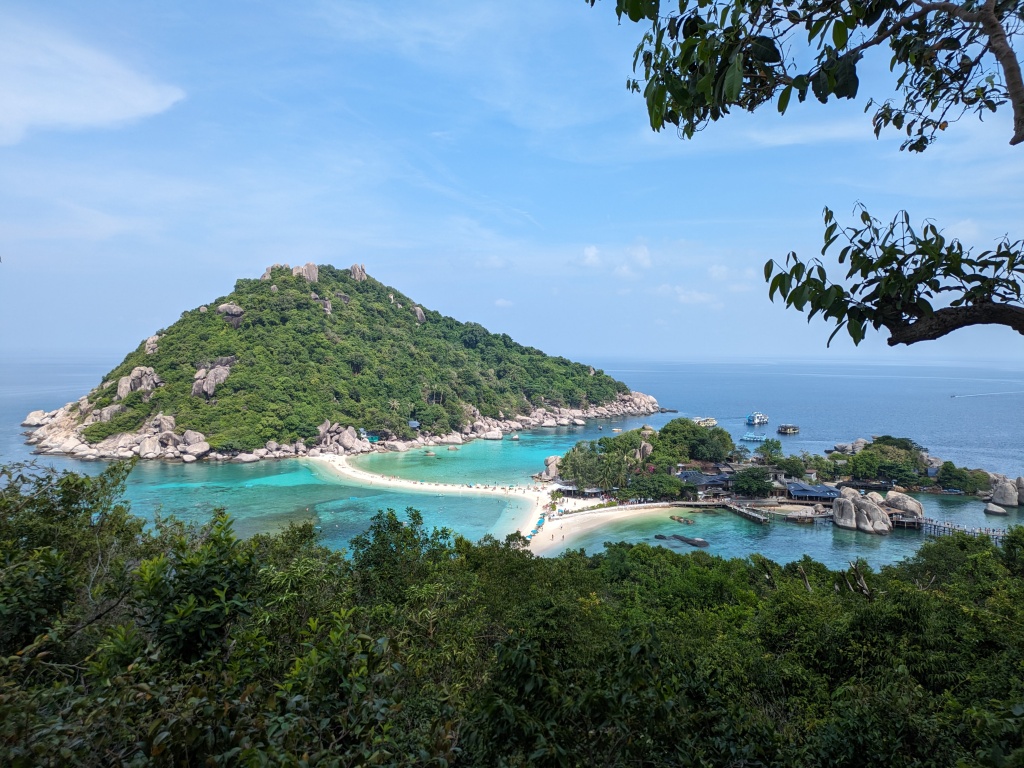
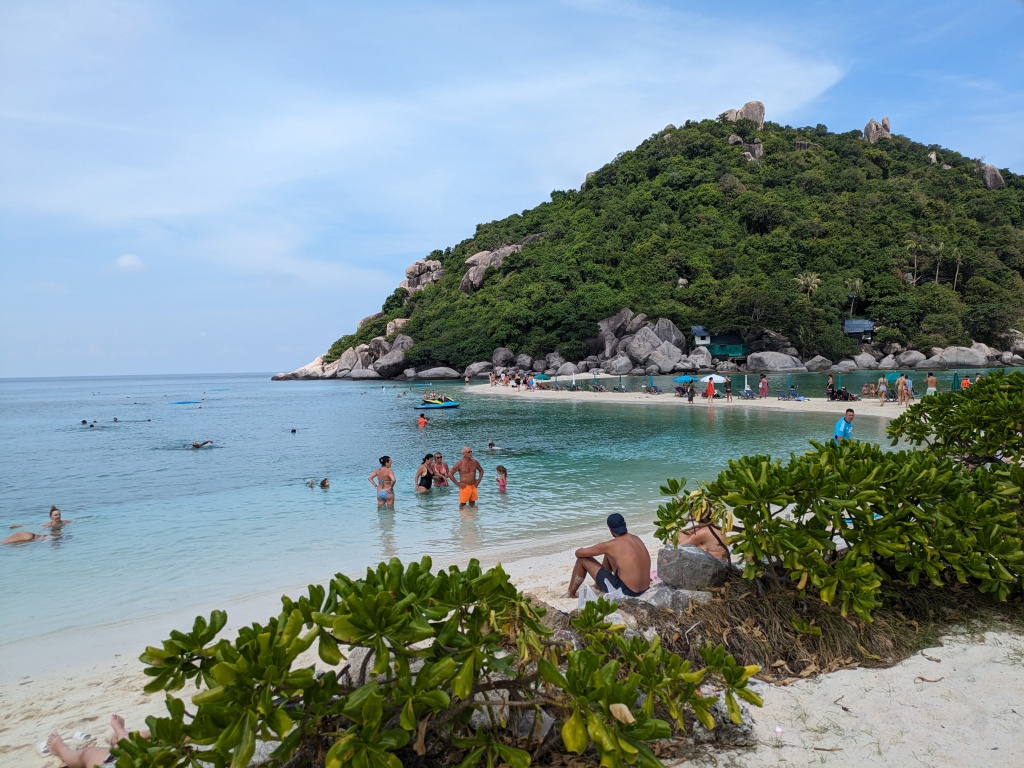
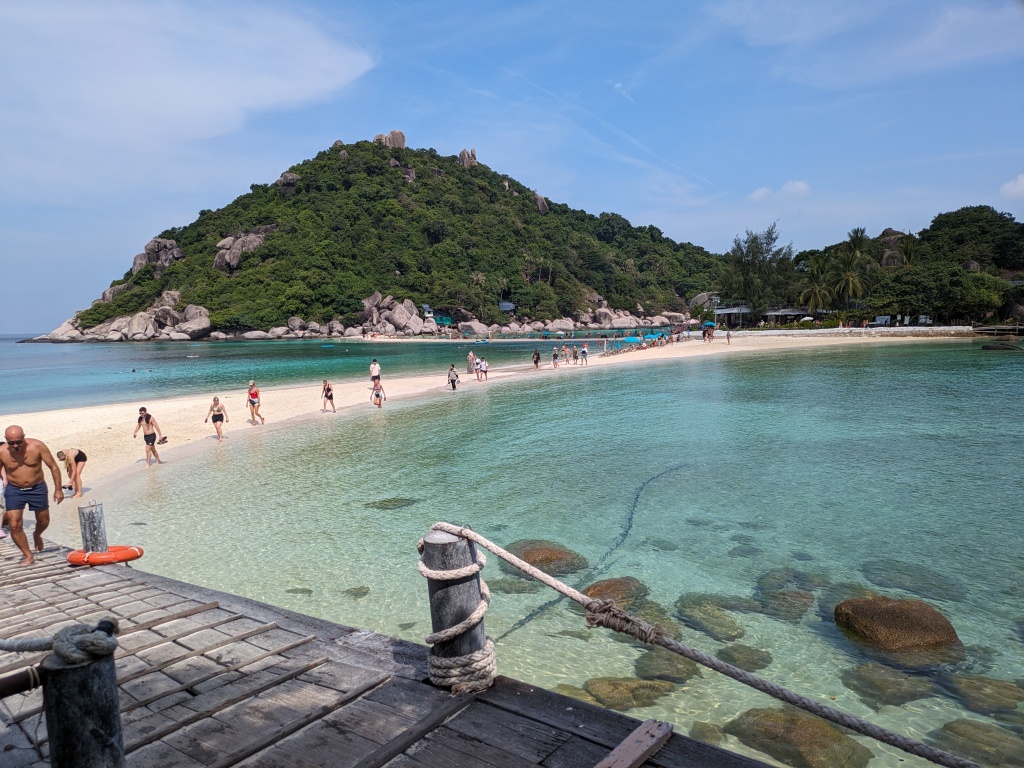
Overall, Koh Tao is exactly what I expected from a small island in Thailand. It was full of young backpackers living cheaply, sunset beach bars, all-night parties, yoga studios, Muay Thai gyms, and countless places for a dish of classic pad Thai noodles. Despite the busyness, I found it comfortable for a multi-week stay. While food and accommodation were some of the most expensive we’d encountered in Southeast Asia, life in Thailand is easy, as it’s one of the most Western places you can visit outside of the West. Love it or hate it, these tourist hot-spots in Thailand do not require that you step outside of your comfort zone.
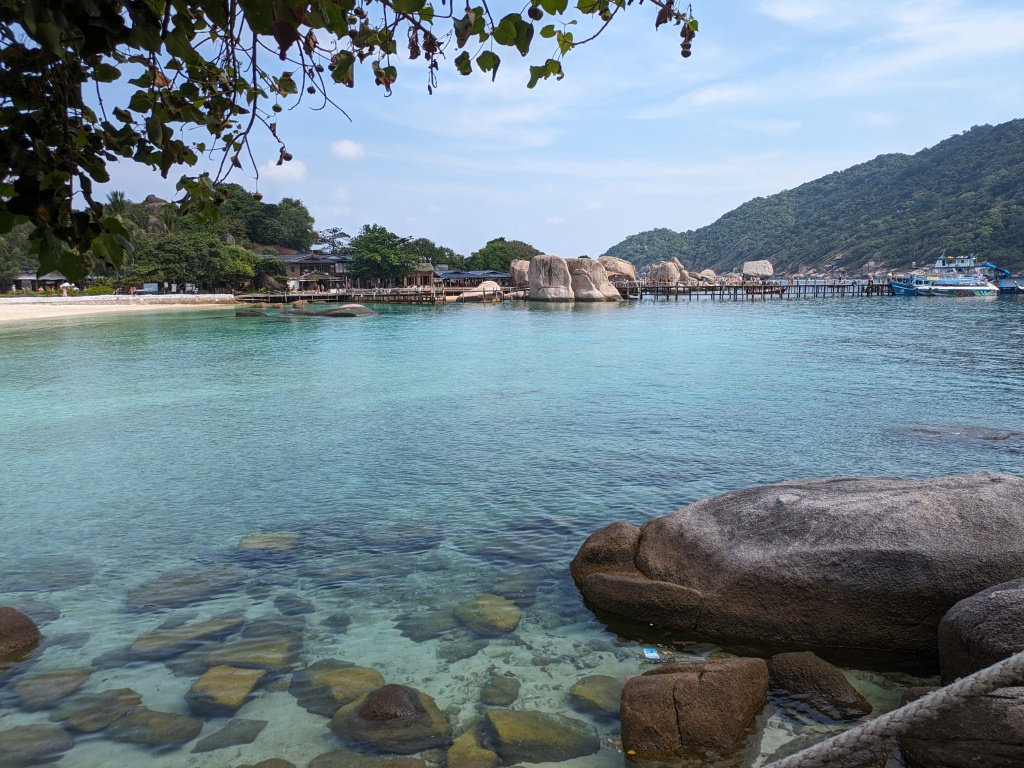
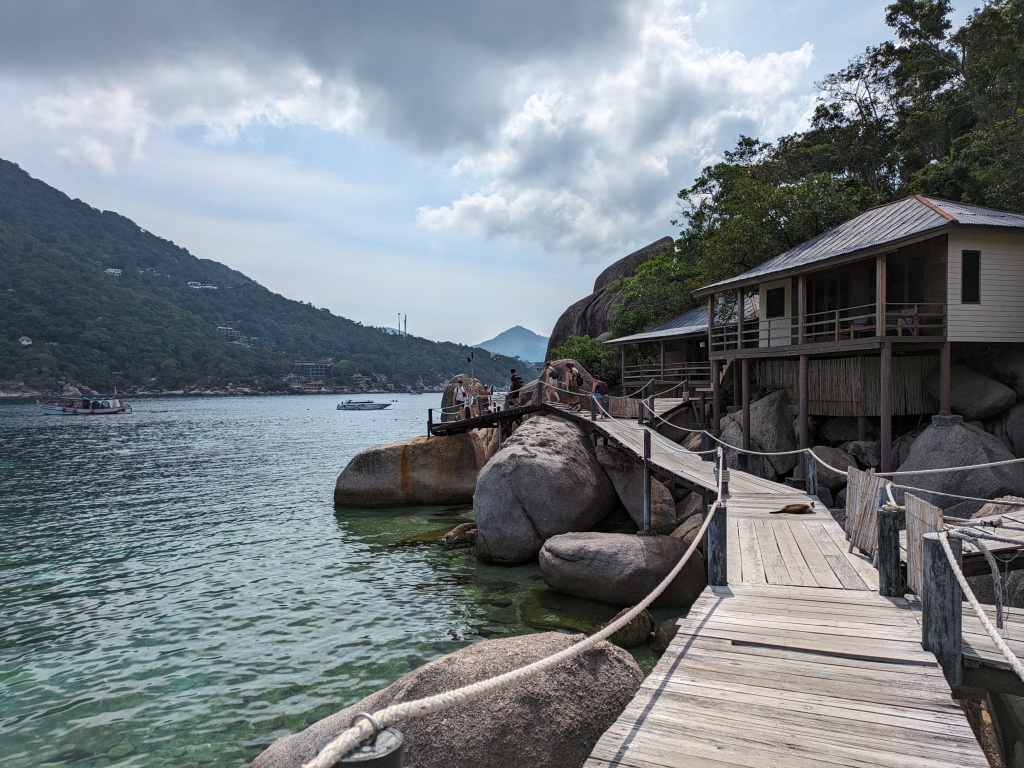
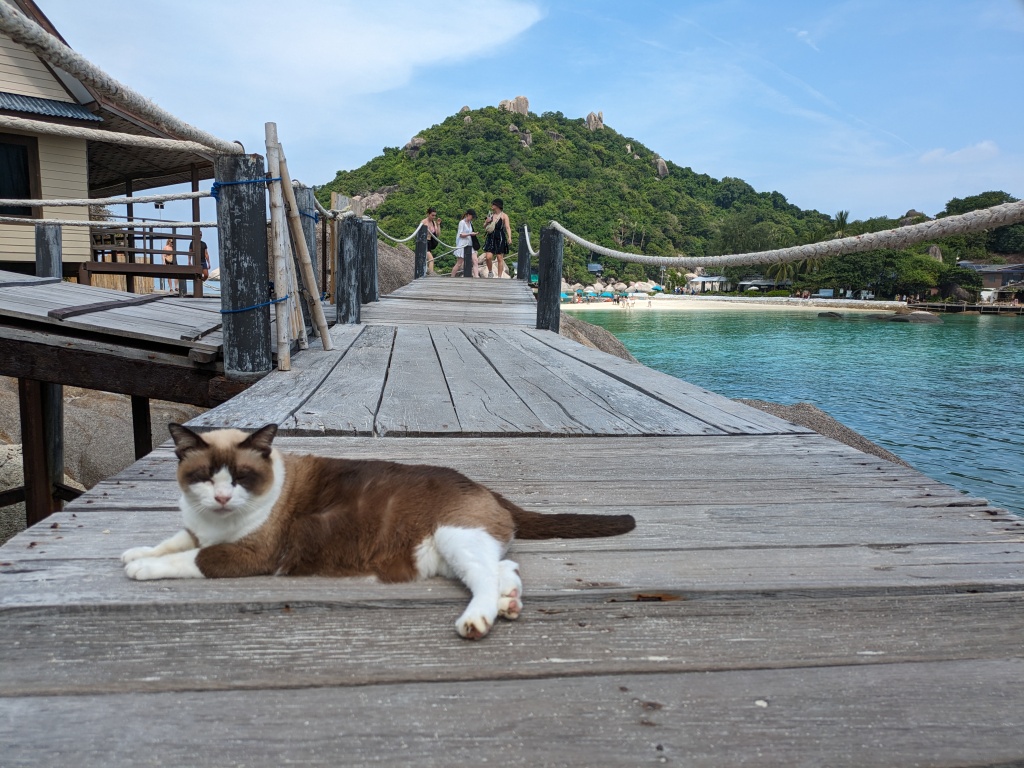
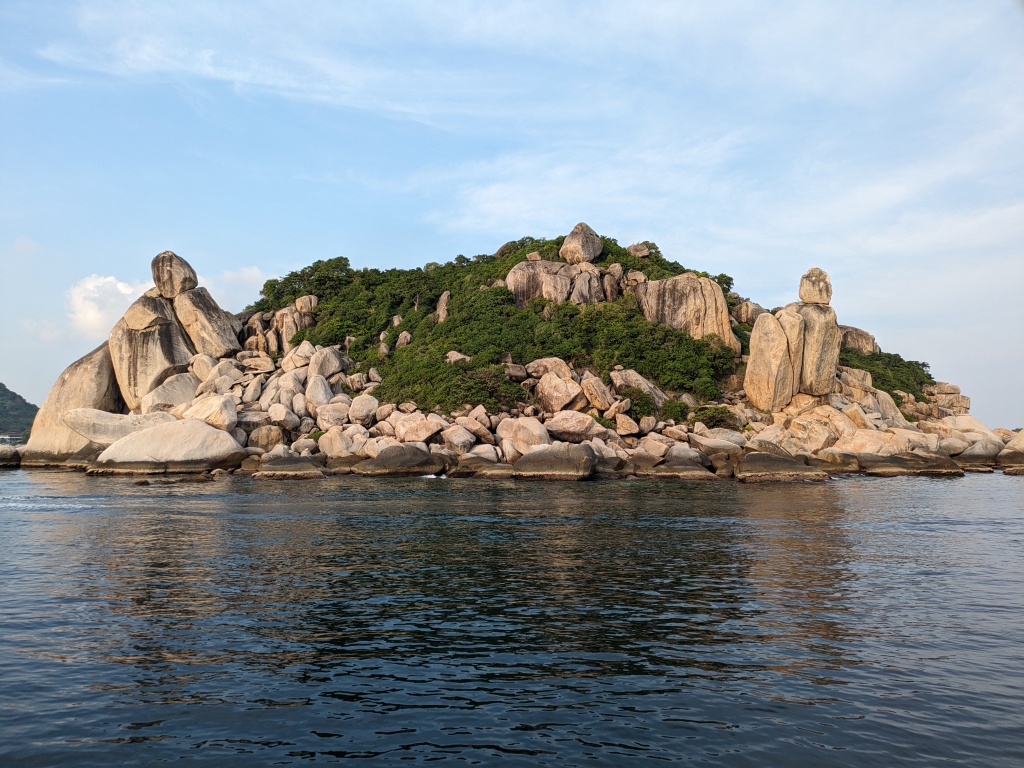
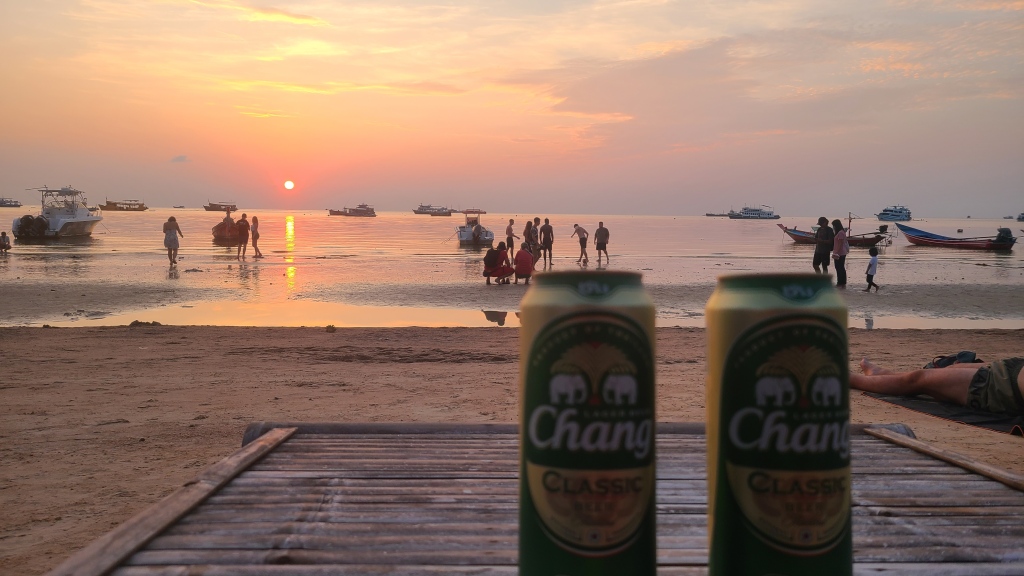
All I had wanted from Thailand was beaches and scuba diving, and that’s exactly what I got. Was I done with either? Nope! Stay tuned for more beach adventures from Indonesia, the next country on our itinerary.
